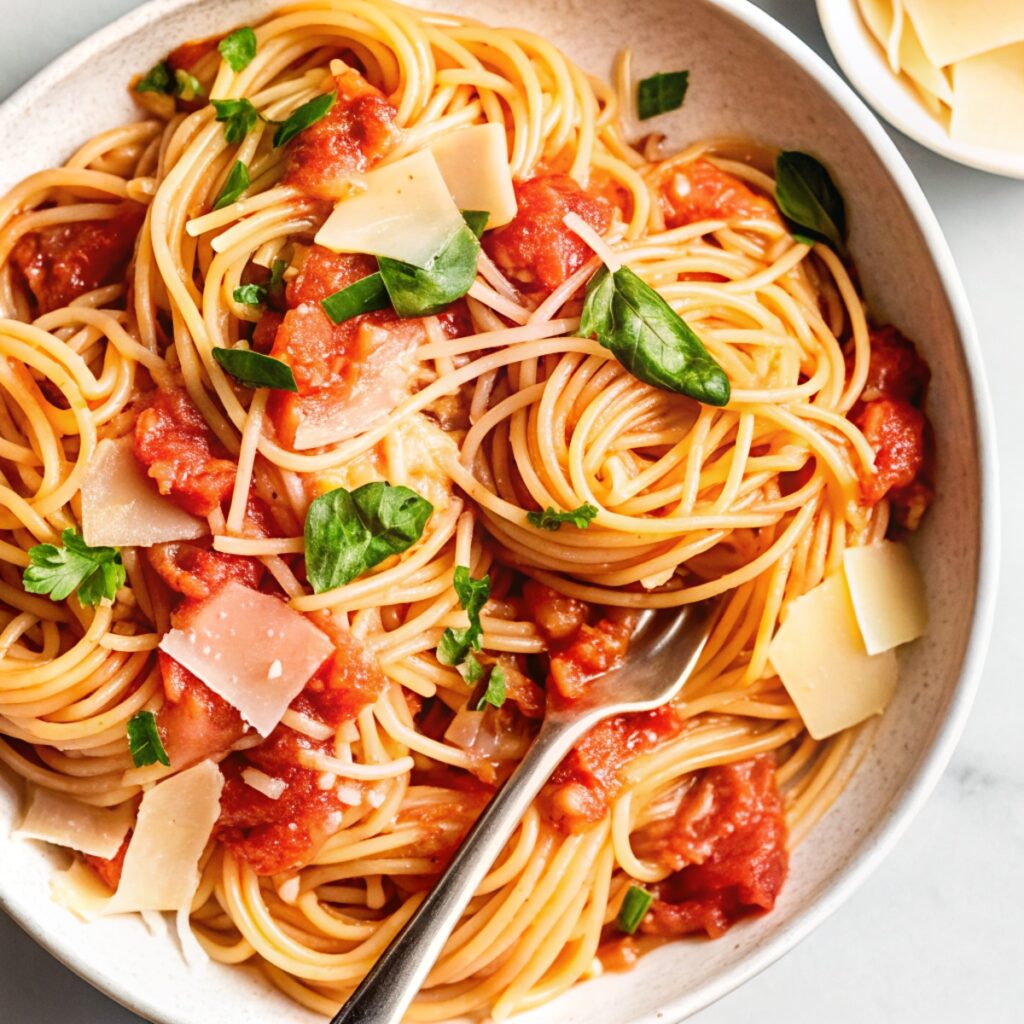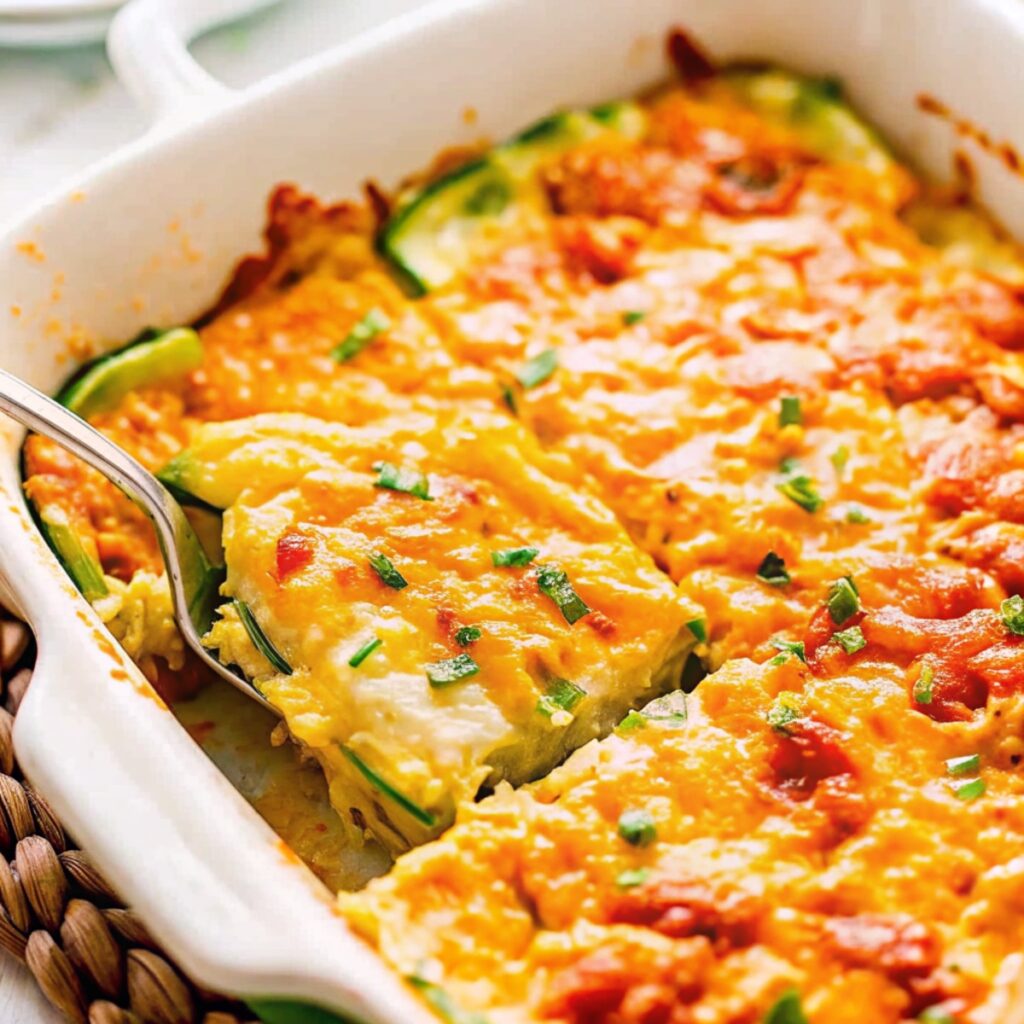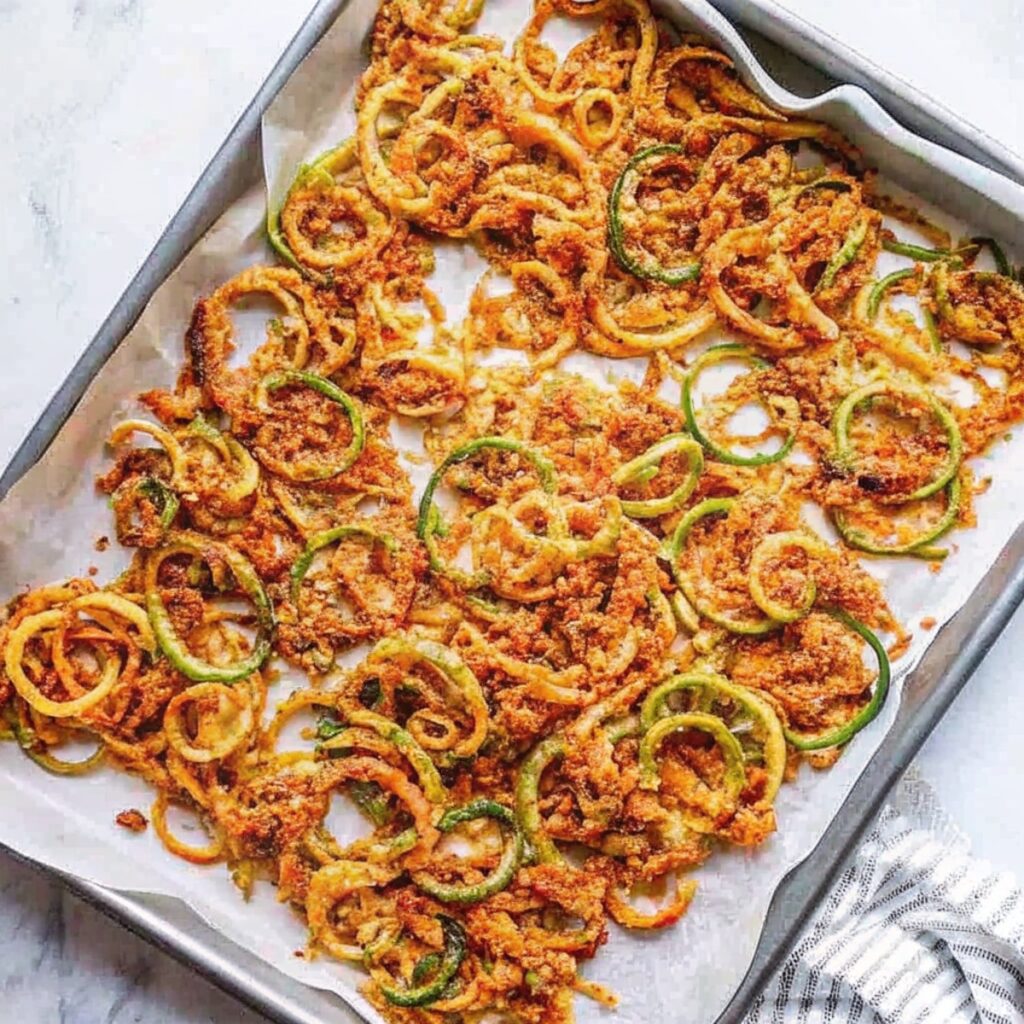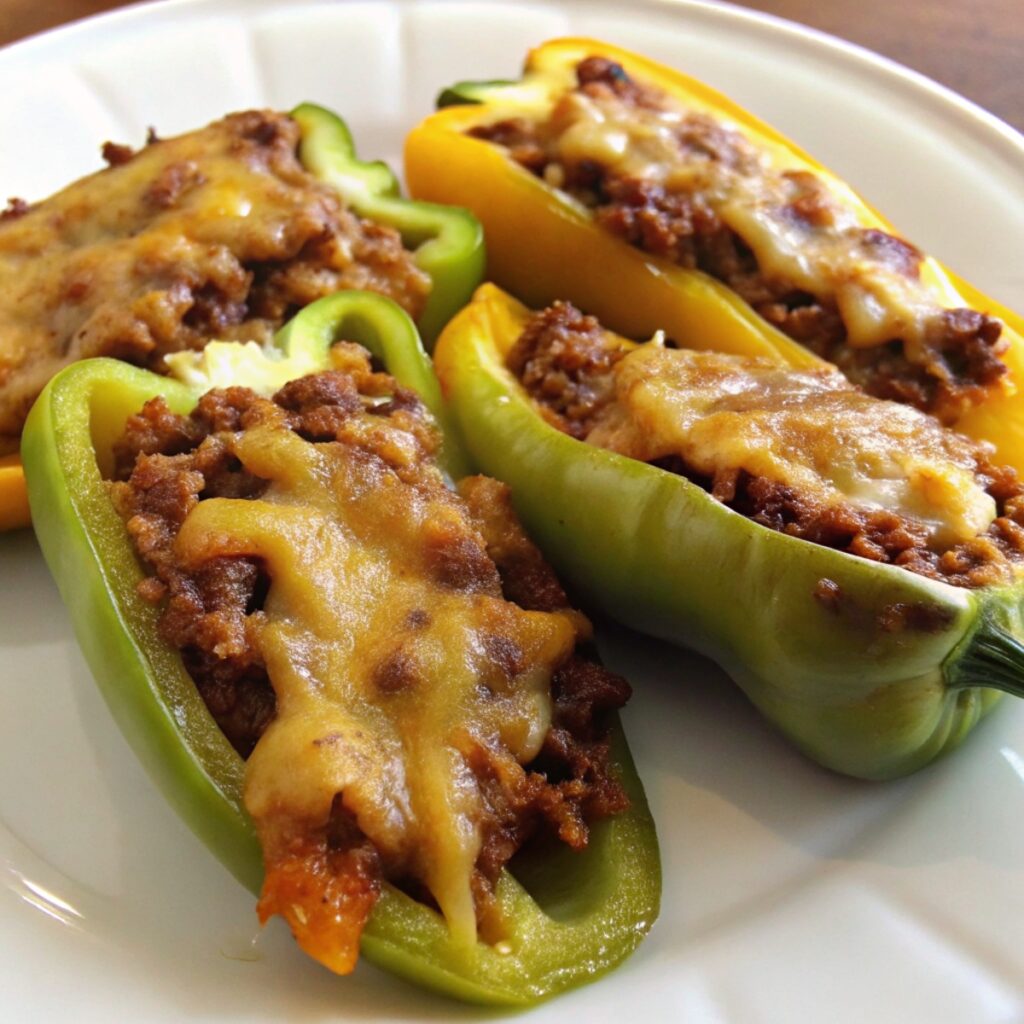Some recipes just fit right into the rhythm of a busy week, and this 20-Minute Fresh Tomato Pasta is one of those go-tos that never lets me down. I first tried it on a night when I wanted something homemade but didn’t want to spend ages in the kitchen. It’s the kind of dish that feels like a little reward at the end of a long day—warm, filling, and packed with flavor, but not heavy or complicated. The fresh tomatoes and basil make it taste like summer, even if you’re making it in the middle of winter with decent grocery store tomatoes.
What I love most is how adaptable it is. If you’re having friends over, it scales up easily and looks beautiful on a big platter. The colors alone make it inviting, and the aroma of garlic and basil always gets people asking what’s cooking. I’ve found it’s a great “bridge” recipe: fancy enough for guests, but simple enough for a quick solo dinner. Plus, it’s a lifesaver when you need to use up a glut of ripe tomatoes.
One tip I’ve picked up is to save a bit of the pasta water before draining. It’s a small step, but it makes the sauce cling to the noodles and gives the whole dish a silky texture. I also like to have extra Parmesan and basil on hand for serving—those finishing touches really make it feel special, even if you’re just eating at the kitchen counter. If you’re looking for a recipe that delivers comfort without fuss, this fresh tomato pasta is definitely worth a spot in your rotation.
Whip Up 20-Minute Fresh Tomato Pasta
Click here to get printable version
Tools of the Trade & Core Ingredients
- Large pot for boiling pasta
- Large non-stick pan or skillet
- Colander
- Sharp knife and cutting board
- 12 oz spaghetti or favorite pasta
- 1 tsp olive oil
- 1 garlic clove, grated
- 1 shallot, finely chopped
- 1 ½ lbs ripe tomatoes, diced
- 2 tsp balsamic vinegar
- ½ tsp fine sea salt
- ⅓ cup grated Parmesan cheese
- 1 cup fresh basil, sliced
Bringing the Story to Your Kitchen: The Method
- Bring a large pot of salted water to a boil. Add your pasta and cook according to the package instructions. Before draining, scoop out about 1 cup of the pasta water and set it aside—this will help you adjust the sauce later.
- While the pasta cooks, heat olive oil in a large non-stick pan over medium heat. Add the grated garlic and chopped shallot. Sauté for 1-2 minutes, stirring often, until they’re soft and fragrant but not browned. If they start to color, lower the heat—you want gentle flavor, not bitterness.
- Add the diced tomatoes to the pan. Sprinkle in the salt and pour in the balsamic vinegar. Stir everything together and let it cook for 3-5 minutes. The tomatoes should start to break down and release their juices, forming a light, chunky sauce.
- Drain the pasta and add it directly into the tomato mixture. Toss well to coat the noodles. Gradually add some reserved pasta water, a little at a time, until the sauce is silky and clings to the pasta. Stop adding water when the sauce looks glossy and loose, but not watery.
- Stir in the grated Parmesan cheese. Taste and adjust the salt if needed. Serve immediately, topped with extra Parmesan and a generous handful of fresh basil for a bright, fresh finish.
How to Choose the Best Tomatoes
Tomatoes are the star here, so quality matters. Look for ripe, firm tomatoes that feel heavy for their size and have a deep, vibrant color. Avoid tomatoes with wrinkled skin or soft spots. If you’re shopping out of season, cherry or grape tomatoes can be a great substitute—they’re usually sweeter and more consistent year-round. Heirloom varieties add extra flavor and color if you want to impress guests.
Creative Ways to Plate and Present
For gatherings, serve the pasta on a large, shallow platter rather than a deep bowl. This lets the colors and textures shine. Finish with a sprinkle of extra Parmesan, a few whole basil leaves, and a drizzle of good olive oil. If you want to get fancy, add a few halved cherry tomatoes or edible flowers for color. Serve with tongs for easy sharing, and offer extra cheese and basil on the side.
Storage Tips to Keep Ingredients at Their Best
Store tomatoes at room temperature, away from direct sunlight—refrigeration can dull their flavor. Basil is best kept in a glass of water on the counter, like a bouquet, or wrapped in a damp paper towel in the fridge. Parmesan should be tightly wrapped and refrigerated. If you have leftover pasta, store it in an airtight container and reheat gently with a splash of water to loosen the sauce.
Techniques to Maximize Flavor
Letting the garlic and shallot gently sauté is key—don’t rush this step. Using freshly grated Parmesan gives a creamier melt and better flavor than pre-grated. The reserved pasta water is your secret weapon for a silky sauce. Add the basil at the very end to keep its flavor bright and fresh. Taste as you go and adjust salt or vinegar to balance the acidity and sweetness of your tomatoes.
What to Add in Spring, Summer, Fall, or Winter
In spring, toss in a handful of baby spinach or peas for extra green. Summer is perfect for using heirloom or sun-ripened tomatoes and maybe a few grilled zucchini slices. In fall, try adding roasted butternut squash cubes or sautéed mushrooms. For winter, use canned San Marzano tomatoes and a pinch of chili flakes for warmth. This recipe is flexible—use what’s fresh and in season for the best results.
Recipe FAQ: Common Questions
Can I use canned tomatoes if fresh aren’t available?
Yes, you can use canned tomatoes when fresh aren’t in season. Choose whole or diced San Marzano tomatoes for the best flavor. Drain off some of the juice if they seem too watery, and let them simmer a bit longer to concentrate the flavor. Crush them with a spoon as they cook to mimic the texture of fresh diced tomatoes.
What’s the best way to reheat leftovers?
Reheat leftover pasta gently in a pan over low heat. Add a splash of water or a drizzle of olive oil to help loosen the sauce and prevent sticking. Stir frequently and heat just until warmed through—overheating can make the pasta mushy. Top with fresh basil and a little extra Parmesan to refresh the flavors.
How do I prevent the pasta from sticking together?
After draining, toss the pasta immediately with the tomato sauce. The sauce coats the noodles and keeps them from sticking. If you’re not ready to combine right away, toss the drained pasta with a teaspoon of olive oil to keep it separate. Don’t let cooked pasta sit in the colander for long—it dries out quickly.
Can I make this recipe gluten-free?
Absolutely! Just substitute your favorite gluten-free pasta. Keep in mind that some gluten-free pastas cook faster or can become mushy if overcooked, so check for doneness a minute or two before the package suggests. Reserve some pasta water as usual to help the sauce cling.
Is there a vegan option for this pasta?
To make this dish vegan, simply leave out the Parmesan or use a plant-based alternative. Nutritional yeast is a good substitute for that cheesy flavor. Add a splash more olive oil or a handful of toasted pine nuts for richness. The rest of the recipe stays the same.
How can I scale this recipe for a crowd?
This recipe doubles or triples easily. Use a larger pot and pan, and cook the pasta in batches if needed. When mixing everything together, use a big mixing bowl or toss directly on a large platter. Have extra basil and Parmesan ready for topping, and keep the pasta water handy to adjust the sauce consistency as you go.

20-Minute Fresh Tomato Pasta
Ingredients
- 12 oz spaghetti or your favorite pasta
- 1 tsp olive oil
- 1 clove garlic grated
- 1.5 lbs ripe tomatoes diced
- 2 tsp balsamic vinegar
- 0.5 tsp fine sea salt
- 0.33 cup grated Parmesan cheese
- 1 cup fresh basil sliced
Instructions
For Pasta:
- In a large pot, bring salted water to a boil. Cook the pasta as directed on the package, saving 1 cup of the cooking water before draining.
For Sauce:
- Heat olive oil in a skillet over medium heat. Sauté garlic and shallots for 1-2 minutes until softened and fragrant.
- Add the diced tomatoes along with salt and balsamic vinegar. Allow the mixture to simmer for about 3-5 minutes until the tomatoes release their juices.
- Combine the drained pasta with the tomato sauce, adding reserved pasta water gradually until the desired consistency is achieved.
- Incorporate the Parmesan cheese and adjust seasoning if necessary. Top with extra cheese and fresh basil before serving.






